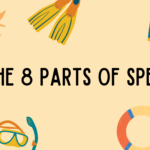Nouns are like the building blocks of language, and they’re really important for good communication. In this article, we’ll talk about what nouns are, the different kinds they come in, and give examples to help you understand how they work. Let’s start by looking at the main types of nouns:
Types of Nouns:
- Common Nouns
- Proper Nouns
- Compound Nouns
- Abstract Nouns
- Countable Nouns (Count Nouns)
- Uncountable Nouns (Mass Nouns)
- Abstract Nouns
- Singular and Plural Nouns
Now, let’s see each type with examples:
Common Nouns:
- General, non-specific entities.
- Examples:
person (doctor, teacher),
place (city, school),
thing (book, computer),
idea (happiness, courage).
- Examples:
Proper Nouns:
- Specific and unique, always capitalized.
- Examples:
person (John, Mary),
place (Paris, New York),
thing (The Eiffel Tower, The Mona Lisa),
idea (The Renaissance, The Great Depression).
- Examples:
Concrete Nouns:
- Tangible, representing physical entities.
- Examples:
person (baby, musician),
place (beach, park),
thing (car, house),
idea (melody, fragrance).
- Examples:
Abstract Nouns:
- Represents concepts, emotions, or qualities.
- Examples:
emotion (love, fear),
concept (freedom, justice),
quality (honesty, intelligence).
- Examples:
Countable Nouns (Count Nouns):
- Can be counted, with singular and plural forms.
- Examples:
singular (cat, apple),
plural (cats, apples).
- Examples:
Uncountable Nouns (Mass Nouns):
- Represents substances or qualities that can’t be counted.
- Examples: water, knowledge, happiness.
Collective Nouns:
- Refers to groups of people, animals, or things.
- Examples: team, herd, family.
Table for Better Understanding:
| Type of Noun | Example |
|---|---|
| Common Noun | book |
| Proper Noun | Shakespeare |
| Concrete Noun | mountain |
| Abstract Noun | joy |
| Countable Noun | dog |
| Uncountable Noun | water |
| Collective Noun | orchestra |
FAQs about Nouns:
Q1: Can a noun be both common and proper?
Yes, a noun can be both common and proper. For instance, “man” is a common noun, while “John” is a proper noun.
Q2: What’s the difference between concrete and abstract nouns?
Concrete nouns refer to tangible objects like a “chair,” while abstract nouns represent intangible concepts like “happiness.”
Q3: How can I identify countable and uncountable nouns?
Countable nouns have both singular and plural forms, while uncountable nouns don’t have a distinct plural form. For example, “water” is uncountable.
Q4: Are there exceptions to capitalizing proper nouns?
Generally, proper nouns are always capitalized. However, there might be some exceptions in specific contexts or styles.
Conclusion:
Nouns are very important for good communication. When we understand their different types and use them right, we get better at expressing ideas and sharing stories. Whether it’s everyday stuff or specific things, nouns help us talk about the world in a way that makes sense to everyone.


